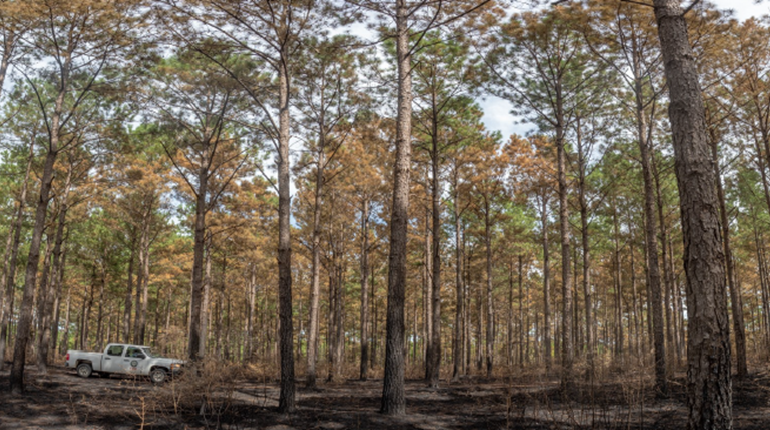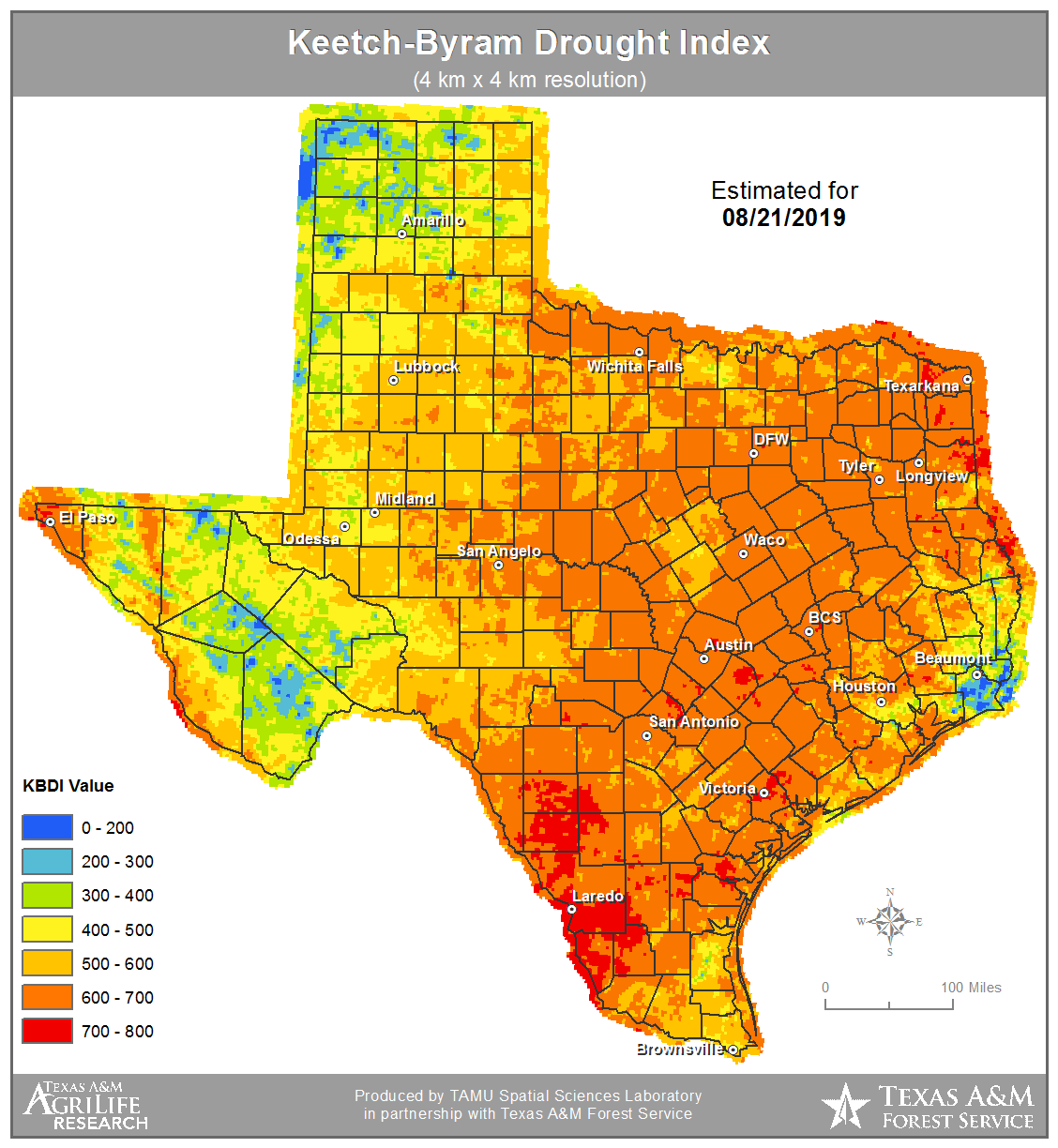In Part 1, we examined two wildfires that hit pine plantations in the severe drought of 2011. The Bearing Fire killed 20,000 acres of various aged loblolly plantations in Trinity and Polk Counties. We also discussed the Cypress Fire in the Angelina National Forest, a 15-year-old longleaf plantation with no mortality. Regular prescribed burning and the resilience of longleaf protected the investment of the longleaf plantation.
So, lets look at wildfire damage to pine plantations during a “normal” dry summer and fall.
At the boundary of Polk and Tyler County, are many thousand acres of pine plantations. A two-month dry spell in the fall of 2015 set the stage to kill a 10-year-old loblolly plantation. A hunter campfire escaped into the plantation north of Chester in October. This dry spell was at a Keetch-Byram Drought Index (KBDI) of around 650. The fire was brisk and crowned through the stand, typical of what can happen to a yaupon filled plantation on a windy day in a dry fall. Following the complete loss of the loblolly plantation, those landowners decided to convert to longleaf and start doing prescribed burning. Now they manage over 600 acres of longleaf in Polk and Tyler Counties.
This year, our longleaf plantation tour looked at hundreds of acres of new longleaf plantations established by Resource Management Service south of Chester along the Polk/Tyler County line. RMS experienced some 2011 wildfire mortality and made decisions to convert some of the loblolly stands to longleaf following that disastrous season. They chose stands on upland sites, droughty soils where loblolly had been underperforming their production expectations. We also looked at 1,000 acres of new longleaf east of Colmesneil managed by Mike Walker, Azimuth Forestry. Both ownerships considered resilience of longleaf to wildfire for these plantations.
This past August, the “Red Gate Fire” hit one of those 3-year-old RMS longleaf stands during a short-term dry spell, not abnormally hot. The KBDI (see map for Tyler/Polk Counties) on August 21, 2019, was around 600. Lightning started the fire in a loblolly stand then spread to 262 acres including the 3-year-old longleaf. Loblolly ages 10 to 20 were killed and/or severely scorched. 2019 was not an unusually dry year, but much of our east Texas region had drought index values that ranged between 500 and 650.
The fire was in one of the 3-year-old longleaf plantations that we visited on our June longleaf tour. Visitors noted the good herbaceous cover dominated by grasses and forbs. Longleaf seedlings had begun to bolt out of the grass stage. The longleaf had been planted in December of 2016 and had been burned in January of 2018, via prescription. At the time of the wildfire, the longleaf ranged from 10” to 48” tall. Longleaf seedlings were damaged where the terminal bud was exposed or where a jackpot of woody fuel was near the young trees. Most of the longleaf stand was undamaged, but a few spots had mortality upwards to 10%. The loblolly were merchantable size with mortality of 15-25% and additional trees severely scorched.
Gaps in the new longleaf stand are scheduled for replanting to recover the original planting density of 605 trees per acre. Consider that this fire in a loblolly plantation aged 1 to 5 would have been a total loss.
Texas A&M Forest Service responded rapidly once the fire was reported and effected quick containment and control. Click here for the Red Gate Wildfire report from TFS, which includes several nice photos of the responding longleaf post-burn.
Longleaf is known as the “tree that fire built” for a reason. Between growth spurts, their terminal bud is wrapped in a sheath of protective bundle of dense needles. The vulnerable stage is when the bud in elongated, or “candling” during a rapid growth interval. After a few weeks, the bud is rewrapped with a needle sheath. Fires when candling can damage the plant or if excessive heat from fuels such as yaupon or logging debris ignite close to the terminal bud. Good stewardship of the stand reduces heavy accumulations of logging slash and dense stands of yaupon. The preferred fuel bed would be native forbs and bunch grasses, not a thicket of highly volatile yaupon draped with pine straw.
I recommend starting fire early in a longleaf stand with a dormant season burn by age 2. Attend a Longleaf Alliance academy and learn the full prescription for developing the longleaf stand.
Loblolly stands can also be prepped to be more fire resilient with thinning, but you need to wait several years to start doing any prescribed burning. I recommend not burning before age 10, then using a highly skilled burner to introduce cool burns into a loblolly stand.
*Disclaimer: The views expressed in blog posts on txlongleaf.org are those of the author.

